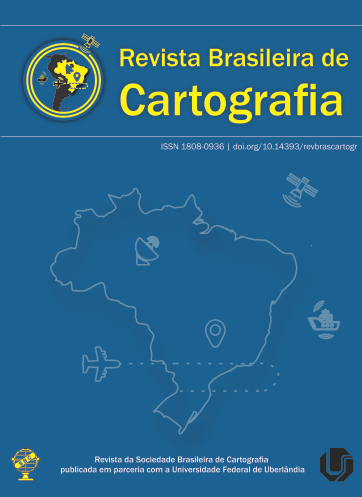Performance of the descriptor Max. Diff. in the classfication of Eucalyptus plantations in the Rio de Janeiro state
Main Article Content
Abstract
The growth of the eucalyptus crop area in Brazil has been verified by census data, and the use of remote sensing data helps to understand where, when and how this process happens. The work aims to analyse the performance of LANDSAT spectral features in the classification of eucalyptus land cover at different stages of growth using the state of Rio de Janeiro as the pilot area. Maximum Difference and NDVI spectral features, extracted from OLI / LANDSAT8 images, were used in an object-based classification (GEOBIA). The confusion matrix using validation points showed a total accuracy of 83.6% and a kappa index of 0.807. The automatic classification had a commission error of 17%, mainly with homogeneous forest and crop. The omission error of 9% is distributed mainly in slope areas, assigning a better performance to the classifier in the flat areas.
Downloads
Metrics
Article Details
Authors who publish in this journal agree to the following terms:
- Authors retain copyright and grant the journal right of first publication with the work simultaneously licensed under a Creative Commons Attribution License that allows others to share the work with an acknowledgment of the work's authorship and initial publication in this journal.
- Authors can enter into separate, additional contractual arrangements for the non-exclusive distribution of the journal's published version of the work (e.g., post it to an institutional repository or publish it in a book), with an acknowledgment of its initial publication in this journal.
- Authors are permitted and encouraged to post their work online (e.g., in institutional repositories or on their website) before and during the submission process, as it can lead to productive exchanges, as well as earlier and greater citation of published work (see "The Effect of Open Access").





